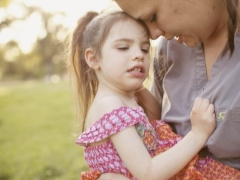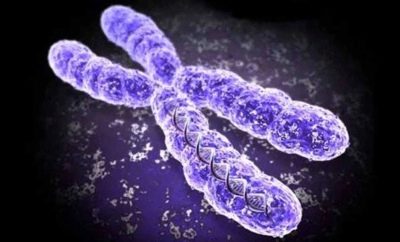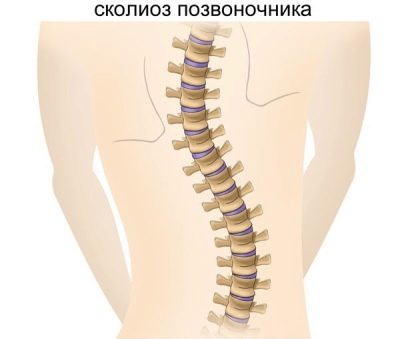Rett syndrome in children
When children are diagnosed with “mental disorder,” it is always bad, but another question is what scares more: a terrible but familiar definition (such as schizophrenia or autism) or unfamiliar concepts, such as Rett syndrome, for example. Few non-specialists have a clear idea of what it is, and after all, treatment (or at least alleviation of suffering) of a small patient suffering from a mental disorder is possible only with a full understanding of the problem.
Characteristic of the disease
Modern science knows very little about Rett syndrome, since for a long time it was considered an ordinary dementia and has not been studied as something separate. For the first time, the idea that some of the unusual signs of classical dementia make it possible to isolate a particular disease occurred to the Austrian pediatrician Andreas Rhett in 1954. For more than ten years, he tried to independently find confirmation of his own theory, which he succeeded in, but the world medical community widely acknowledged the existence of an open syndrome only in the 1980s.
Serious research in this industry began at all only at the turn of the millennia, which does not allow specialists to have enough baggage of necessary knowledge.
Rett syndrome today is described as a genetically determined progressive degradation of the central nervous system, which affects the growth and functioning of the brain and the musculoskeletal system. Children with this syndrome are untrained, they cannot even move independently. The disease is rare, occurs about once every 10-15 thousand babies, and the absolute majority of the risk groups are girls, but there are only a few cases of the development of the syndrome in boys for the entire time.
Due to the short duration of studying the disease, no one can say for sure how many years these children live, but scientists have concluded that boys, suffering from such a diagnosis thousands of times less often than girls, do not survive if present.
Obvious signs of the disease are noticeable at the earliest stages of life - babies already show some symptoms, which worsen over time, and by four years any development of the body completely stops.
At the present time, the disease is considered incurable, but it is possible to alleviate the suffering of the child, and in the meantime, scientists from around the world continue to try to find effective ways to defeat Rett syndrome.
Causes
The exact causes of Rett syndrome are still the subject of debate, so you can cite as an example several of the most common theories. All of them are now being tested by conducting various studies, and it is also good that physicians have at least established a difference from dementia and are now moving in the right direction.
Most often, experts point to gene origin of the disease: they say that the disease is caused by gene mutation. This deviation develops to the extent of pathology even at the stage of gestation, and therefore the consequences are already visible in the early stages of life.
Indicated that increased number of blood ties in the pedigree probably affects the likelihood of Rett syndrome, and the percentage of such bonds is high only compared to the norm - 2.5% instead of 0.5%.Pronounced foci of morbidity also speak in favor of such a factor as the causes of the pathology, usually small villages, rather isolated from the world, where sexual relations between members of one family in the past are quite likely.
Another group of researchers points to abnormalities in the X chromosome - fragility of one of the sections of her short shoulder.
It has been proven that sometimes such an anomaly is actually observed, but scientists have not yet been able to find the exact site responsible for the development of pathology, as well as to establish a definite pattern that allows one to assert a 100% correlation between cause and effect.
There is a third (less well-known) theory, according to which Rett syndrome can be due to metabolic abnormalities - impaired metabolism caused by mitochondrial dysfunction.
It is noted that in all patients with this disease marked elevated blood levels of two acids - pyruvic and lacticthe pathologies of lymphocytes and myocytes are also obvious. However, this is only an observation so far, and specialists cannot now say whether this is the cause of Rett syndrome or its consequence.
Symptoms and Syndromes
There are a number of signs by which it can be determined that a child has Rett syndrome - they are used by doctors, but parents of a child whose behavior seems suspicious can also pay attention to them.
Although it is generally accepted that babies are already born sick, in the first months of life it can not be seen almost nothing. The newborn looks completely healthy, from any painful signs you can distinguish only a slight lethargy of muscle tissue, low body temperature and general pallor, but these symptoms may be barely noticeable, and their presence may indicate both Rett syndrome and the usual mild a cold.
Since Rett syndrome is a slowdown and subsequent cessation of development, alarming symptoms can be noticed already at the age of 4-6 months, when the baby begins to lag behind his peers in such important indicators of development as the ability to crawl and independently roll over on his back. Again, this lag can be caused by many factors, but it always requires the heightened attention of medical professionals. Slow growth of the head (compared to the rest of the body) gradually appears.
There are also such signs that are characteristic only for this ailment - or are not typical precisely in this combination for other diseases:
- Special manipulation of the hands. The degradation in Rett syndrome is rather deep - the girl suffering from it gradually loses the ability to hold objects in her hands even if she had done it with confidence before. However, hand movements do not completely disappear - they become unusual.
For this disease characteristic are repetitive movements, reminiscent of washing hands, as well as clapping hands and body, fingering.
- Lack of interest in knowledge. A healthy baby is very curious and tries to explore the world by any available means, whereas the girl with Rett syndrome is indifferent to the world around her and severe mental retardation. Sometimes the child has time to begin to distinguish between adults and even talk, but these successes soon disappear.
- Very noticeable head disproportion (in relation to the rest of the body).
- Convulsive seizuresoften accompanied by wringing of hands - with a sharp transition from detachment and unemotional to loud cry; epileptic seizures are also possible.
- Rapidly progressive scoliosis. Since the degradation of the nervous system is extremely negative for muscle tone, the posture of a sick girl deteriorates very quickly and takes on clearly pathological forms.
Chronology of development
Each small patient develops Rett syndrome individually, but still it allows specialists to identify certain stages of its development:
- The first stage. It begins with the first signs, noted at the age of about 4 months, and lasts up to 1-2 years, has the form of a gradual stagnation of development. It becomes noticeable that the head and limbs grow more slowly than the organism as a whole, the muscles are also characterized by unnatural relaxation. At first, the child is not very actively interested in the environment, and then does not even react to an attempt to captivate him with an interesting game.
- Second stage Time frame - age from 1 to 2 years. If the child has already begun to learn to walk and talk a little, these skills are gradually lost, but characteristic movements appear, as mentioned above. It is at this stage that Rett syndrome is usually definitively diagnosed; therefore, most of the characteristic signs of illness refer to the second stage. A sick child shows causeless anxiety and does not sleep well, there are problems with breathing. Periodic episodes of desperate cry are possible, epileptic seizures are possible. At this stage, treatment aimed at eliminating the symptoms has no effect.
Due to the failure of the perception of the surrounding world, patients with Rett syndrome often mistakenly make other diagnoses - usually autism or encephalitis.
- The third stage. It lasts up to about ten years, it is more stable, there are even minimal signs of improvement - the girl is now sleeping better, screaming less and generally seems much calmer, sometimes even emotional contact with her parents is possible. However, motor activity decreases even more and is replaced by numbness, which is diluted only with frequent convulsions. Mental retardation is assessed as deep.
- Fourth stage. After ten years, there is almost complete destruction of the skills of physical activity - the patient is usually completely or almost completely immobilized. The inability to move independently is further aggravated by extreme forms of scoliosis and poor blood supply to the extremities. At the same time, the number of seizures is reduced, the patient as a whole can maintain emotional contact with adults. There are no significant deviations in puberty. There is also no binding to life expectancy - there is fragmentary information that a person can live for decades for such a state.
Specific diagnosis
The first step in the diagnosis of Rett syndrome is the observation of the patient for the manifestation of the characteristic signs of the disease described above. If they are confirmed at least partially, the child can be sent to a more thorough hardware examination: computed tomography of the brain, electroencephalogram and ultrasound are done.
The particular problem is that Rett syndrome is very often confused with autism - this is caused both by some similarity of symptoms in the early stages of development, and not too much fame of the ailment we are considering. The problem researchers pay attention to the fact that the first autism signs observed in the first weeks of life, while patients with Rett syndrome in the first months look completely healthy.
Autists manipulate surrounding objects, their movements do not seem to be extremely awkward, but children with Rett syndrome are very restrained in movement, breathe worse, they have a small head and a tendency to epileptic seizures.
It is important to correctly distinguish Rett syndrome from autism in order to more effectively deal with its manifestations and not to aggravate the condition of the little patient even more.
Features of treatment
Since the disease is provoked by disorders at the gene and molecular levels, modern medicine cannot completely cure Rett syndrome.However, there is a set of measures and means aimed at at least partially improving the condition of patients.
The main (and in the early stages - the only) method of dealing with the disease is drug treatment.
To block epileptic seizures, "Carbamazelin" or any other potent anticonvulsants are prescribed to these children. To establish a stable sleep mode, the drug "Melatonin" is used.
Prescribed also drugs that improve blood circulation and activate brain activity - they will not save from degradation completely, but they will help slow it down and make it not so pronounced. Sometimes doctors also recommend "Lamotrigine" - a new drug that restricts the penetration of monosodium salt into the cerebrospinal fluid.
Scientists have noted that in patients with Rett syndrome, such penetration is increased, but they still cannot say for sure whether this is the cause or effect of the illness (and whether such a drug effect affects the patient’s condition).
However, not only drugs can slow the development of Rett syndrome. Doctors claim that proper diet also gives a positive result; To achieve it in the diet, one should increase the content of fiber, vitamins and foods high in calories, since all these elements are vital for the development of any human body. It is recommended to feed the sick child more often - perhaps at least part of the increased portions of food will go to the destination and contribute to the baby's progress.
To maintain the musculoskeletal system in good condition special massage, as well as gymnastics. If in a healthy person such exercises would cause a clear development of muscle tissue, then in a patient it is more likely to oppose degradation, but with such a problem even such an achievement is not bad.
Since patients with Rett syndrome are also characterized by an unstable emotional state, music is recommended, which has a calming effect. Some experts believe that it also contributes to increasing interest in the world, because for her knowledge does not require any conscious action.
The complex of all these measures will not make the child healthy, but will allow him to slow down his degradation, It is possible to retain some psycho-emotional and motor abilities that are considered normal for a healthy person. In large cities, there are centers for the adaptation of patients with severe mental disorders, in which they also deal with children with Rett syndrome.
One can only hope that in the near future, scientists will present a full-fledged cure for this ailment - or at least another step closer to alleviating the condition of patients. Leading experts believe that it will be possible to successfully resist the development of the disease by implanting artificially grown stem cells into the body.
Today, such technology is being actively developed, fragmentary information is received that prototypes have even been tested on laboratory mice and have given a positive result. Such news inspires restrained optimism, but it’s not yet possible to talk about the exact timing of the victory of humanity over Rett syndrome.
In the next video you can watch the first issue of the program series “The diagnosis does not change the child, it changes you,” which is led by the director of the Rett syndrome association.
































